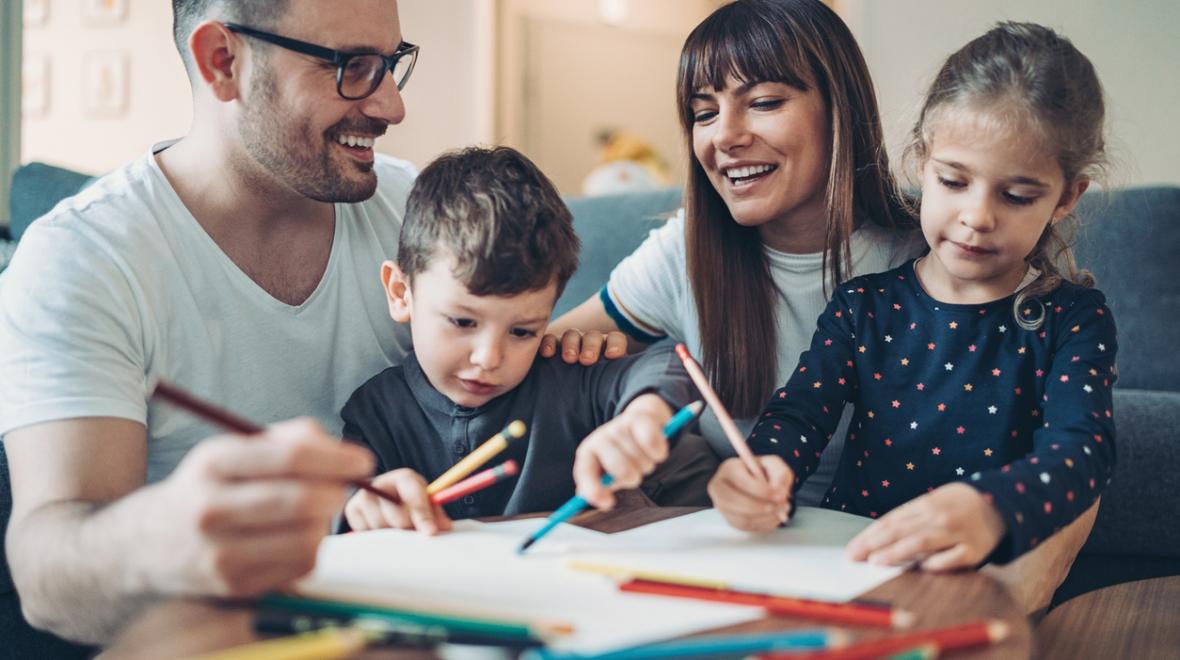
I have a degree in history and am a “words person” by trade, so when the COVID-19 tsunami of changes swept through in March — upending everything “normal” — one of my first thoughts was: Get it down. We have to remember, for our kids and ourselves, what it felt like to have everything change so drastically, to have the world compress until it was just our nuclear family, figuring it out day by day.
The funny things, the poignant things, the headlines and highlights: I wanted to record it all.
And so, I tried. For a while. I started a daily journal with my 10-year-old son, as part of his “home schooling.” He completed two entries. I started a sentence-a-day journal. Surely, that’s achievable, I thought — just enough to differentiate each day from the rest! Nope. Inevitably, I’d leave it until bedtime, at which point my brain was such a muddle that I couldn’t remember a single thing that happened that day.
Some ideas have worked. A family time capsule project was fairly successful, in part because it doubled as a way to recycle the detritus of quarantine life. We put a white plastic box out and started tossing stuff into it (with some culling): the letters and trinkets my son and his friends shared with each other in those first few weeks, the headlines about COVID-19 case numbers and job losses, photos, and screenshots of a text thread from a friend that kept me sane. A free, printable quarantine time capsule was my son’s writing homework for several days, and he took it surprisingly seriously.
But eventually the box filled up, and the news never ended, and we ran out of steam. The box is now duct-taped shut and destined for a trip to basement obscurity.
Five, nearing six months in, I still believe in the importance of documenting and remembering this time as a family, but I’m also tired. So, I reached out to the communities around me to get some fresh ideas for remembering our family history during the COVID-19 pandemic. I was trying to understand how rather than what. Here are a few strategies I’ll be trying (or have tried) as we head into our sixth month of isolated life.
Make storytelling do double duty
My son is a remote-learning rebel, so we weren’t about to enroll him in summer school. But he does need to work on skills, so for weekly writing practice, on Fridays, we sit down and write a letter each. I wrote out a simple template of prompts for him so he can think of something to say, which I use, too. It hasn’t been easy — after years of thrashing out emails, my handwriting is worse than my fifth-grader’s — but after a few weeks, we have a solid routine down. He writes to friends, and I vary between friends, relatives and political letters. And then, before we send them off (why does it take days to stamp and address a letter?), I snap photos so we have a record for that quarantine photo book we will someday put together.
Document for the kids
I’ve been focused on ways we can record moments together as a family, but my friend Diana (full disclosure: she’s a ParentMap staff editor) reminded me that the kids don’t necessarily have to be involved. A mom of four, she has a routine of creating a “ta-da list” for her family; in her day calendar, she records activities and learning moments she had with each child on a particular day. This doesn’t have to be a solely quarantine-focused exercise, of course, but as she says, it “helps with the feeling that the days are not just passing me by.” (She credits the podcast “Happier” with the term “ta-da list” and the homeschooling book “The Brave Learner: Finding Everyday Magic in Homeschool, Learning, and Life” with the concept.)
Do that thing you do
Are there habits from the Before Times that you can commandeer for family story sharing? If you were a whiz at keeping up the calendar, use those blank pages to write down the movies you’ve watched, the funny things the people in your family have said or the actions you’ve taken to support protests. Do you already share highs and lows from the day at mealtimes? Assign a scribe to write them down every night.
Anchor it
For years, about once a week, I’d take a few minutes after dinner to jot down a couple of memories in a family journal, which I kept within arm’s reach of our dinner table. I didn’t know it at the time, but the journal keeping succeeded because, as habits expert B.J. Fogg explains, it had all the elements of a successful habit. I started small (one or two sentences), the habit was anchored to a set routine (dinner) and it was convenient: The journal lived on a shelf next to the dinner table. Then, about two years ago, we redesigned that area of our living/dining room, which included ditching the shelf where the journal had lived. That small change threw off my family journal habit — now I had to get up from the table — and I’ve never regained it.
All this is to say:
None of these ideas will work if you can’t figure out how to transform the habit of documenting from aspiration to behavior, as Fogg would say. Are you committed to taking a daily photo? Noting a quote of the day? Doing a weekly video recording? Writing your own ta-da list? Then take a few minutes to sketch out how you will make it a habit.
The payoff is big. I don’t need to read about the copious research done on why family stories matter to know that though the COVID fatigue is real, the investment in remembering is worth it.
5 tips for documenting family memories
Create a dedicated email account for COVID-related photos and stories. Instead of scrolling social media, write up a few happenings and forward them to that account. One Seattle-area mom of a 4-year-old forwards photos to an email account she set up for her child that she will one day share with her.
Time capsules are a fun, time-honored project for families, and you can find several templates online. We liked the printable worksheet series on the blog “What Moms Love,” and GoNoodle also has a three-minute episode about how to create a time capsule.
A photo book is a visual time capsule. Beyond family photos, take pictures of newspaper stories, art projects, signs and scenes that capture what life is really like right now. (A friend suggested a lineup of wine bottles.) Apps like Chatbooks make it easy to turn a social media feed into a photo book.
There is an app for that: Have an elder in your family whose story you want to capture from far away? StoryCorps offers an app, StoryCorps Connect, which lets you video-record a loved one remotely. The audio will be uploaded to the archive at the Library of Congress.
Make history: Would your kids be motivated by contributing to a historical archive? You can do just that at the Seattle Public Library by submitting photographs and videos to a COVID-19 community collection. Or contribute your pandemic story to the Washington State Historical Society’s collection.











